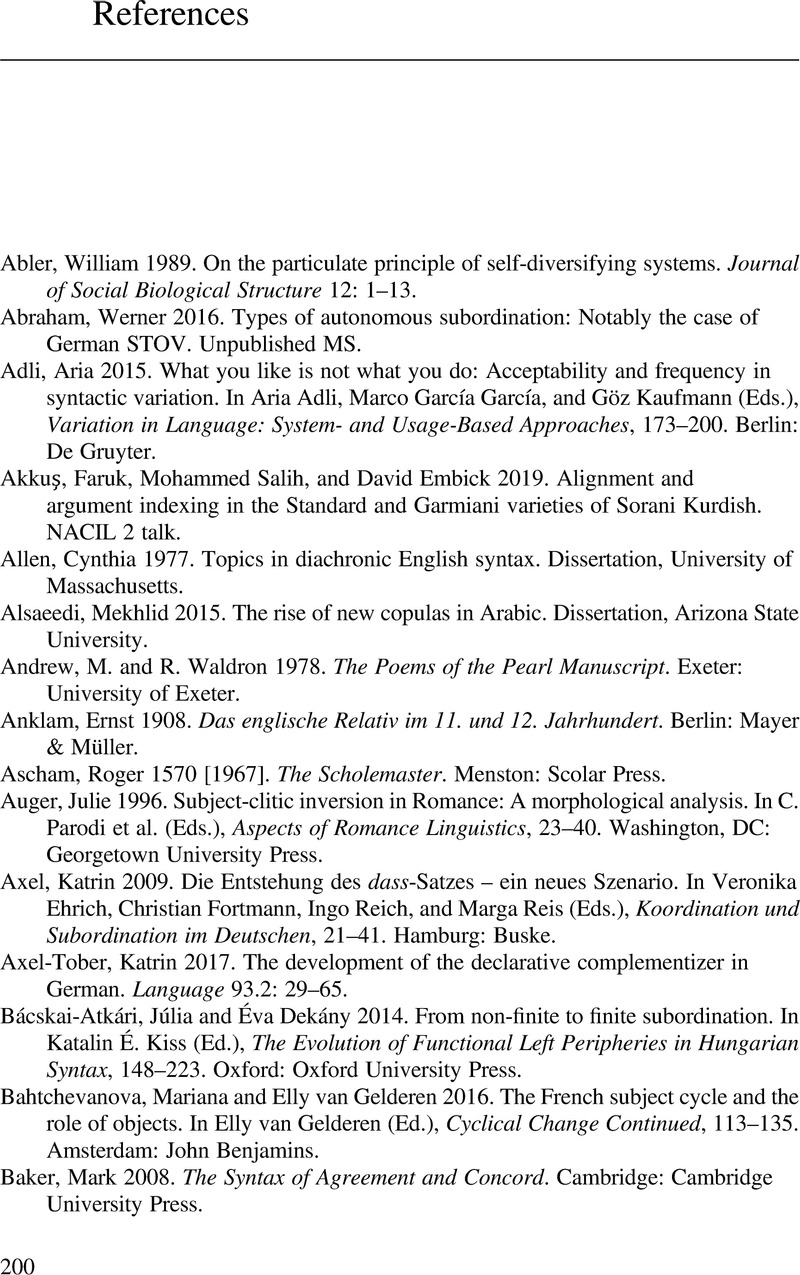Book contents
- Third Factors in Language Variation and Change
- Third Factors in Language Variation and Change
- Copyright page
- Contents
- Figures
- Tables
- Preface
- Abbreviations
- 1 The Shift towards a Minimal UG
- 2 Labeling in Language Change
- 3 Determinacy in Language Variation
- 4 Determinacy in Language Change
- 5 Labeling and Determinacy: Verb-Second and Expletives
- 6 Adjunct Incorporation and Avoiding Pair-Merge
- 7 Conclusion
- References
- Index
- References
References
Published online by Cambridge University Press: 16 December 2021
- Third Factors in Language Variation and Change
- Third Factors in Language Variation and Change
- Copyright page
- Contents
- Figures
- Tables
- Preface
- Abbreviations
- 1 The Shift towards a Minimal UG
- 2 Labeling in Language Change
- 3 Determinacy in Language Variation
- 4 Determinacy in Language Change
- 5 Labeling and Determinacy: Verb-Second and Expletives
- 6 Adjunct Incorporation and Avoiding Pair-Merge
- 7 Conclusion
- References
- Index
- References
Summary

- Type
- Chapter
- Information
- Third Factors in Language Variation and Change , pp. 200 - 218Publisher: Cambridge University PressPrint publication year: 2021

